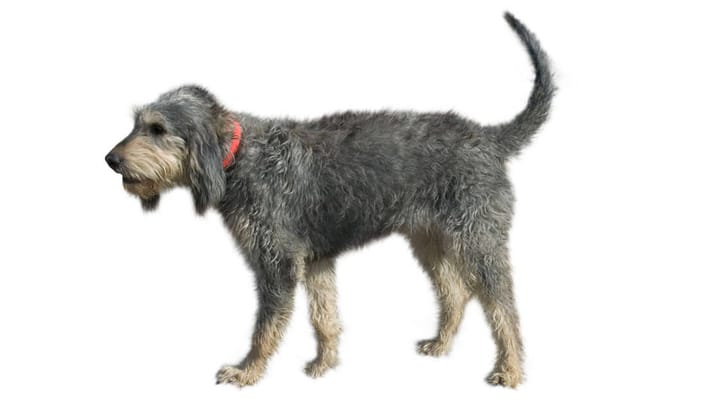Griffon Nivernais

This rather mythological-looking dog is, in a sense, just that: Having become extinct around the time of the French Revolution, the creature was rebuilt from a number of other hounds regional to the Nivernais area one hundred years later. Thankfully they made him a little smaller than his conceptual ancestors, since they were reputed to be enormous. He’s a country fellow through and through, from his attitudes and preferred living arrangements, and will not take to city life. But he’s strong, brave, and (for the most part) stoic, making for a sturdy companion for the rural lady, gent, or rascal.
|
Life expectancy |
The Griffon Nivernais has a life expectancy of between 11 and 13 years |
|
Temperament |
|
|
Size |
Medium
|
|
Adult size |
Female
Between 21 and 24 in
Male
Between 22 and 24 in
|
|
Adult weight |
Female
Between 51 and 60 lb
Male
Between 51 and 60 lb
|
|
Coat colour
Fawn, darkening to bluish black at the tips, sometimes inter-sprouted with white, giving an overall appearance of grey; or fawn overlaid with black or blue. A white patch on the chest will not weaken the individual’s claim to the standard. |
Blue Sand |
|
Type of coat
Shaggy and rough; what the French call Barbouillaud. |
Long Hard |
|
Eye colour
Dark. |
Brown
|
This dog’s most notable presence is in his native land of France; elsewhere, he may be considered rarer and more valuable.
More details about the Griffon Nivernais
Griffon Nivernais: Origins and history
His ‘ancestors’ ran with the Gauls, or came over with the Crusades, or both, depending on who you believe, mixing with grey Saint Louis dogs to create monstrous and hard-working dogs of almost mythological stature. But their numbers dwindled during the reign of Francis I, who preferred a white dog, and the Nivernais’ lineage was preserved only by the efforts of certain noblemen. When they lost their heads in the 18th century, the Nivernais’ breath was also cut. Later enthusiasts rebuilt the breed from scratch, using genetic elements of the Grand Griffon Vendéen, the Otterhound, and the Foxhound, although it is whispered that a soupcon of the original Nivernais made its way in, too, through the seed of a rare survivor of that ancient breed.
Physical characteristics of the Griffon Nivernais
With his monsterish stature, variable bi-colour appearance, and unruly hair, you will never see two Griffon Nivernais that look quite the same. Brooding, indeed often occupying the same spectrum as a storm, this ersatz ancient creature is all the same adorable for his soulful eyes, perky eyebrows, swinging ears, and tousle-ability. His beard adds a certain affability to his otherwise moody countenance, while fringes to his tail add levity. His body is compact and powerful, arching appealingly about the spine.
Griffon Nivernais: Characteristics
Griffon Nivernais: Behaviour
Training a Griffon Nivernais
The Griffon Nivernais is not difficult, but requires firm, consistent training to flourish.
Griffon Nivernais: Lifestyle
Breed compatibility Griffon Nivernais
Griffon Nivernais: Purchase price
We do not have enough data to set an average price. Looking after a dog of this size typically costs between £70 to £110 a month, including food, medical/insurance, and incidental expenses.
Griffon Nivernais: Grooming
The Griffon Nivernais is not a grooming-intensive dog, and requires brushing less than once a week. Just make sure his ears are clean after excursions.
Griffon Nivernais: Health
He is not noted for particularly bad health, and has an average life expectancy of 12 years.
This dog tends to remain sturdy and fit – he is built to resist the trials of outdoor life.
He prefers it cooler.
He is very tolerant of the cold and harsh weather conditions.
He is active and generally not prone to weight gain.
- Progressive retinal atrophy
- Hip/elbow dysplasia
- Ear infections
- Gastric torsion


